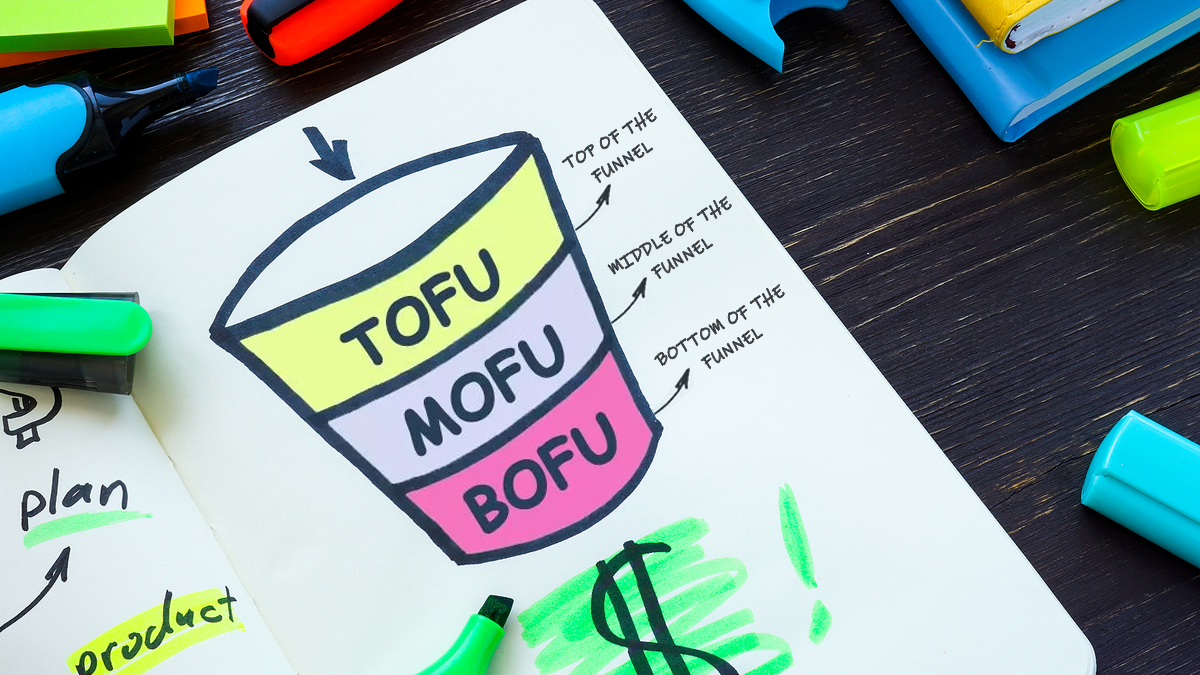Understanding the essence of TOFU (Top of the Funnel), MOFU (Middle of the Funnel), and BOFU (Bottom of the Funnel) is essential for SEO success. In this post, we’ll dissect these concepts, focusing particularly on MOFU and BOFU. We’ll also present a practical framework to help you choose marketing tactics and keywords that enhance conversion rates.
Let’s start by revisiting the basics of TOFU, MOFU, BOFU.
What’s a Sales Funnel?
A sales funnel depicts the step-by-step progression that potential customers go through, starting from their initial awareness of a product and culminating in their purchase. Since the introduction of the AIDA model (Awareness, Interest, Desire, Action) in 1898, marketers have utilized funnel concepts to structure their thoughts and outreach efforts.
The sales funnel, also known as the buyer’s journey or a purchase funnel, is a straightforward concept. As your target audience becomes aware of your brand, a subset of these prospects will consider your offerings, and a smaller subset will eventually become customers.

In today’s digital landscape, prospects often take a non-linear path from awareness to purchase. However, the funnel concept remains valuable because it underscores the diverse information needs of prospects at different stages.
SEO service providers play a crucial role in optimizing the sales funnel by improving visibility and attracting targeted traffic at every stage, ultimately enhancing conversions and revenue. They employ strategic SEO tactics to guide potential customers smoothly from awareness to purchase.
Now, what’s the significance of TOFU, MOFU, and BOFU in all of this?
What Is TOFU, MOFU, BOFU?
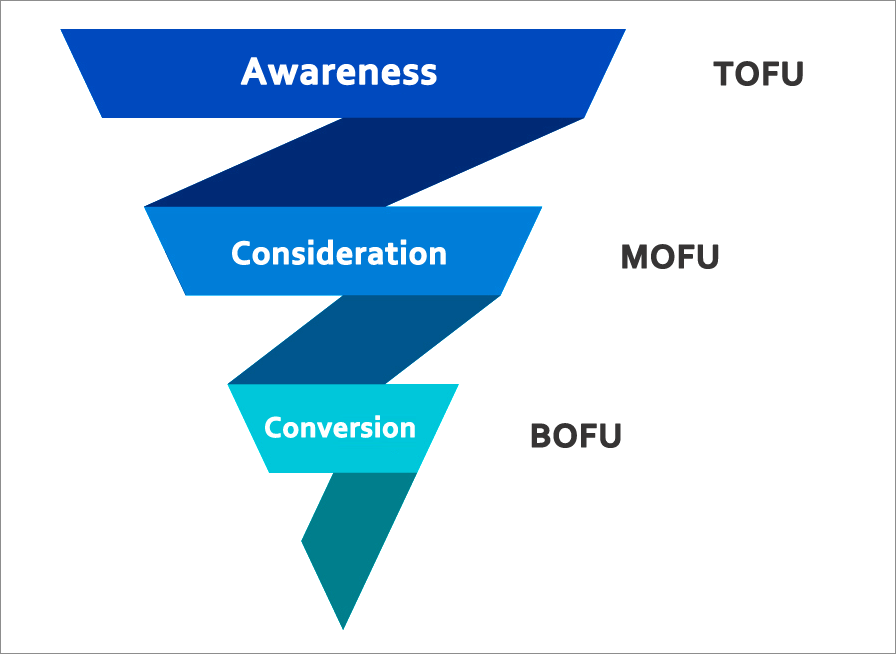
TOFU, MOFU, and BOFU represent the stages of the sales funnel:
- Top of the Funnel (TOFU) represents the initial stage.
- Middle of the Funnel (MOFU) represents the intermediate stage.
- Bottom of the Funnel (BOFU) represents the final stage.
These acronyms offer marketers a concise language to reference various points in the sales process.
Understanding the Benefits of TOFU, MOFU, BOFU
The concepts of TOFU (Top of the Funnel), MOFU (Middle of the Funnel), and BOFU (Bottom of the Funnel) are extremely valuable as they provide a structured approach for crafting engaging content at each stage of the customer journey.
TOFU is about capturing your prospect’s attention and making a lasting first impression. This stage involves strategies to grab their interest and spark curiosity.
In the MOFU stage, the goal is to encourage prospects to delve deeper into your offerings. Here, the content becomes more detailed, emphasizing the unique features of your product and addressing the problems it solves.
At the BOFU stage, the focus shifts to convincing potential customers that your solution is the best choice. Prospects at this level are more receptive to in-depth information, including specifics about transactions and purchases.
It’s important to understand that each stage addresses different informational needs and mindsets of prospects. As they move through these stages, individuals typically spend more time engaging with your brand.
A useful analogy is to think of these stages as courses in a formal dinner. TOFU resembles light appetizers – brief and visually enticing, offering “content snacks” on platforms like Facebook. MOFU is comparable to a more substantial soup and salad course, providing richer content that highlights what sets your product apart. Finally, BOFU is akin to the main course, where potential customers are prepared to consume detailed and comprehensive information.
Adopting this structured approach ensures your content strategy aligns with the evolving needs of your prospects as they progress through different stages.
How Our Methods Differ
While many articles on TOFU, MOFU, and BOFU recommend specific media formats for each stage, it’s important to note that these suggestions may not apply universally. For instance, expecting a plumber or a hairdresser to maintain a weekly podcast or produce a print magazine might be impractical and overly time-consuming. Additionally, podcasts, requiring significant audience engagement, may not be the most effective tool for reaching a TOFU audience.
Our methodology stands out by emphasizing the creation of content that meets the unique requirements of users at each stage, leading to improved conversion rates and ROI. Understanding these principles empowers you to craft a customized strategy that resonates with your audience and aligns with your business goals.
Strategic Considerations
Understanding the right channels and keywords are fundamental to crafting a successful strategy. Let’s explore these crucial elements in our playbook.
Principle 1: Match the Channel With the Stage
Creating content tailored to each stage of the customer journey is essential, but equally important is choosing the appropriate marketing channel for its distribution.
A “marketing channel” refers to various avenues of marketing, including:
- SEO as a marketing channel.
- Email as a marketing channel.
- Social media as a marketing channel.
Determining which channels best suit each stage can be challenging, but our experience has led to some key insights.
Channel Diagram (Simplified version)
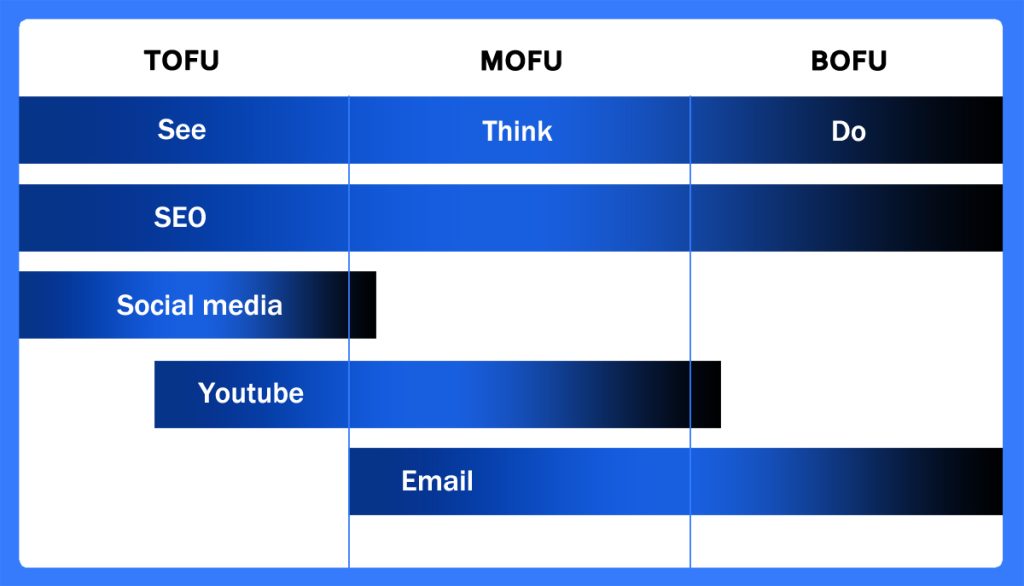
Here’s a simplified framework based on our findings:
- Awareness transforms into “See.”
- Consideration evolves into “Think.”
- Conversion translates to “Do.”
We then associate each stage with the marketing channels most impactful for reaching it.
For instance:
- SEO proves effective across all stages.
- YouTube excels at the Think (Consideration) stage.
- Email performs well for both the Think (Consideration) and Do (Conversion) stages.
If you’re curious about where advertising fits in, explore this diagram showcasing various ad types.
Channel Diagram (Includes Advertising)
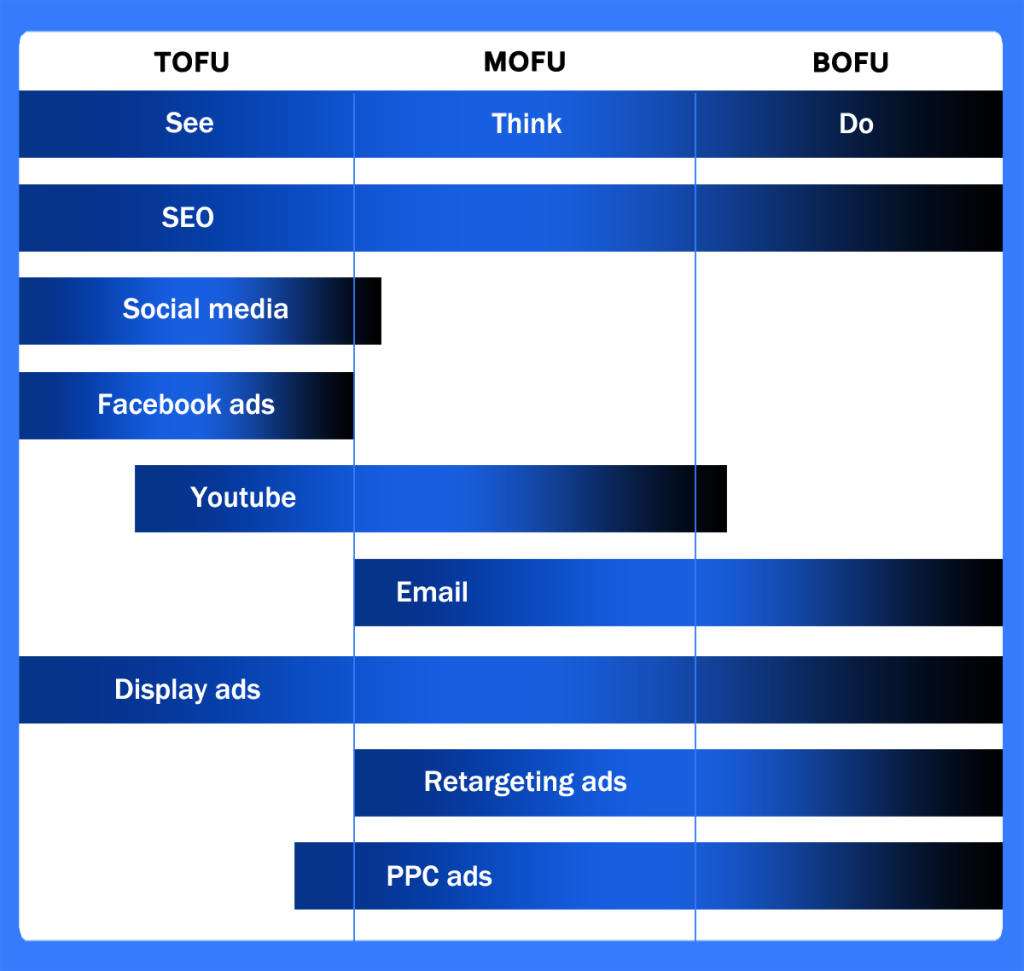
Now that we’ve delved into effective marketing channels, let’s shift our attention to the art of selecting keywords.
Also Read: What Are LSI Keywords: How to Use Them to Boost Your Rankings
Principle 2: Target Keyword Intent
Recognizing the importance of keyword intent is pivotal in aligning your SEO strategy with different stages of the user journey.
Using tools like Ahrefs and Semrush, we can categorize keywords based on the users’ likely thought process:
- “I” stands for Informational: These are TOFU keywords. They’re usually broad and general, such as “SEO,” “literature,” or “planets.” Searchers at this stage are just beginning to gather information, making these keywords somewhat challenging to rank for due to their broad nature.
- “N” is for Navigational: These keywords often include a specific brand or website name, like “Home Depot credit card login,” “In-n-Out Burger,” or “Smithsonian Air and Space Museum.” Users already have a destination in mind.
- “C” is for Commercial (MOFU): Indicative of MOFU, these keywords show a user’s intent to compare or buy. Examples include “best SEO plugins,” “what is the best coating for a metal roof?” and “Geico vs. Progressive.”
- “T” is for Transactional (BOFU): BOFU keywords signal a user is close to making a purchase. They search for specifics like pricing, booking details, or discounts, as seen in “Korean tacos near me,” “book a cruise from Tampa,” or “American-made M65 field jacket.”
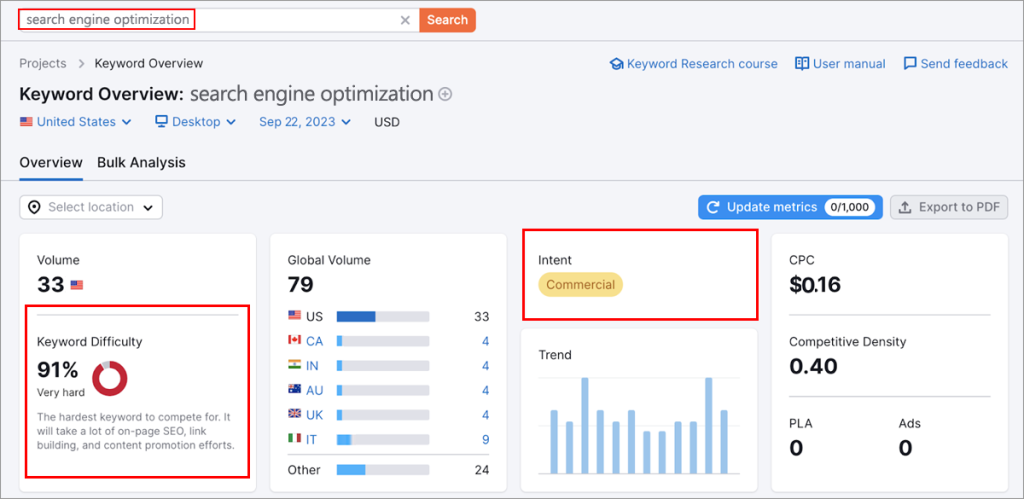
Above: Semrush shows that the highlighted keyword indicates Commercial (MOFU) intent and is “Very Hard” to rank for.
Remember, Commercial (MOFU) and Transactional (BOFU) keywords indicate a higher readiness to purchase. Tailoring your content to align with these stages can significantly enhance your SEO strategy’s effectiveness.
Framework for Success
Let’s simplify this information into a strategy table:
| Stage | Marketer Terms | Keywords to Target | Effective Channels to Use |
| Awareness | TOFU | Informational | SEO |
| Consideration | MOFU | Commercial | Social Media, Facebook Ads, Display Ads |
| Conversion | BOFU | Transactional | SEO, YouTube, Email, Display Ads, Retargeting Ads, PPC Ads |
To put this strategy into action, let’s break down the approach for each stage:
- Creating Awareness:
Our primary focus here is to gather informative inquiries. To achieve this, we’ll heavily invest in SEO (Search Engine Optimization). By optimizing our online content, we can enhance our visibility and attract a broader audience interested in the information we provide.
- Generating Consideration:
At the consideration stage, we aim to reach a more commercial audience. To do this effectively, we’ll leverage social media platforms, with a specific emphasis on Facebook ads. Additionally, we’ll utilize display ads to capture the attention of potential customers who are actively considering their options.
- Driving Conversions:
When it comes to converting potential customers into actual transactions, we’ll employ a multi-channel approach. SEO will still play a crucial role, backed by the power of YouTube and email marketing. To maximize our impact, we’ll use a combination of Display Ads, Retargeting Ads, and PPC Ads. This comprehensive strategy aims to actively engage users and guide them towards transactional involvement.
Now, the next step is to implement these strategies. Let’s discuss how we can seamlessly integrate these strategies into our overall marketing initiatives.
MOFU (Middle of the Funnel) and BOFU (Bottom of the Funnel) Strategy
Focusing on MOFU and BOFU content is a pivotal part of our growth strategy. This approach involves centering our articles and YouTube videos on Commercial (MOFU) or Transactional (BOFU) keywords.
These keywords might not generate the high traffic volume that Informational keywords do, but they attract a more commercially oriented audience. Consequently, MOFU and BOFU content typically leads to higher conversion rates and increased revenue.
Notably, these keywords are often less competitive and easier to rank for than Informational keywords, offering a more favorable return on investment for marketing efforts.
Utilizing tools like Semrush, we can categorize each keyword based on difficulty, from “Very easy” to “Very hard.” For keywords marked as “Hard,” the Keyword Magic feature in Semrush can reveal hundreds or thousands of simpler variants to target.
For new websites or those with limited rankings, focusing on keywords rated as “Very easy,” “Easy,” or “Possible” is advisable.
MOFU and BOFU Content Examples
When exploring online searches, it’s important to recognize the varied purchasing intentions of consumers using Commercial (MOFU) or Transactional (BOFU) keywords.
These users range from those with a general idea of their needs to those with a specific problem they want to solve. A significant number seek “how-to” information as part of their solution-finding process.
By creating content that helps potential customers tackle their challenges, we can directly influence our sales and revenue. MOFU searchers often compare products or services to make informed decisions that best meet their needs.
Our content strategy focuses on three primary types of MOFU/BOFU content:
- Comparisons: Moving Decision-Making Forward
Comparison content plays a crucial role in guiding consumer decision-making, particularly in the Middle of the Funnel (MOFU) stage. These posts, often structured as “versus” articles, are instrumental in evaluating your offerings against other alternatives in the market. Examples include comparisons like “Geico vs. Progressive” or “PandaDoc vs. DocuSign.”
Creating “vs.” posts that highlight your brand offers a significant strategic advantage. By doing so, your brand gains visibility in search queries related to your competitors, thereby allowing you to potentially capture a portion of their market share.
For instance, let’s examine a MOFU comparison review post where SignHouse competently contrasted its services with those of industry leaders PandaDoc and DocuSign. As a result, SignHouse’s comparison now appears in search results for “PandaDoc vs. DocuSign,” introducing potential customers to a more cost-effective alternative to these well-established options.

Furthermore, SignHouse has astutely created and maintained a dedicated page for its product comparison with DocuSign. Impressively, this page ranks at the top for searches like “DocuSign vs. SignHouse.” This strategic move not only elevates SignHouse’s online presence but also firmly establishes it as a competitive player in the market.
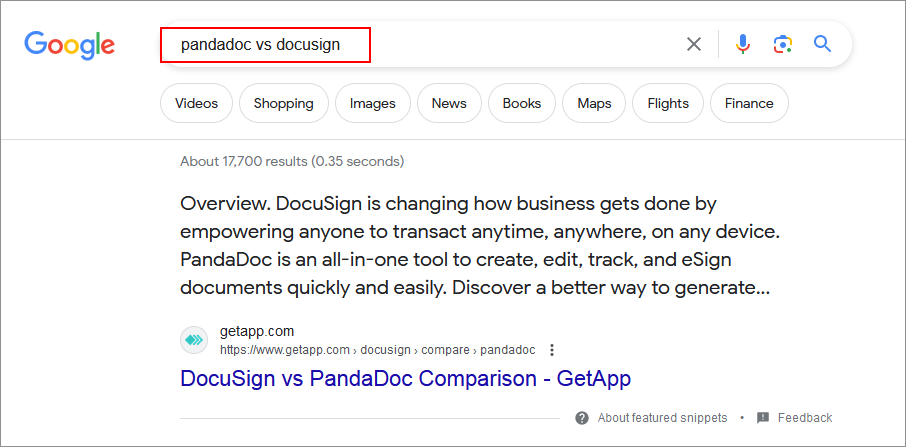
- How-Tos: Solving Problems
Creating how-to content is not just a trend; it’s a strategic approach that proves profitable by demonstrating how your product or service can solve potential clients’ problems.
Start with a list of action verbs combined with “How to.” Examples include:
- How to Add…
- How to Choose…
- How to Create…
- How to Find…
- How to Fix…
Use this list as a base for keyword research using tools like Semrush or Ahrefs. This will help you assess the ranking potential and determine if they cater to commercial or transactional intents.
You can implement How-To Content by promoting your how-to guides on both your blog and YouTube. This ensures a wider reach and accommodates different user preferences. For instance, we incorporated SEO case studies into our content strategy. These are essentially detailed how-tos that showcase the success stories of small firms benefiting from increased web traffic. This approach not only diversifies our content but also provides concrete examples of our effectiveness.
- Showcases: Listicle Mini-Reviews
Our showcases are comprehensive guides that provide insights into our products and those of our competitors. We focus on key differentiators. Titles often include numbers and descriptive adjectives like “best,” “easy,” “top,” or “budget.” This style is reminiscent of affiliate marketing sites but is effective for engaging readers.
Use comparison tables in both “versus” posts and showcases. It’s vital to streamline these tables to highlight essential features and differences without overwhelming the reader
Introducing a balanced view with pros and cons helps readers make informed decisions. Keep these points succinct, as visitors tend to skim through content. Emphasizing key features aligns with the scanning habits of users, making it easier for them to grasp the essential points quickly.
Once the MOFU and BOFU content is ready, distribute it through effective channels such as SEO and email marketing. This ensures that your valuable content reaches your target audience, influencing their decision-making process.
By carefully crafting and strategically distributing how-to guides, showcases, and comparison content, we can effectively guide potential customers through the decision-making process, moving them closer to a purchase.
Also Read: Discover the Five Essential SEO Components Every Strategist Must Implement
MOFU and BOFU Channels
For successfully engaging prospects in the Middle of the Funnel (MOFU) and Bottom of the Funnel (BOFU), we’ve found that a combination of SEO, email marketing, and YouTube is exceptionally effective. These platforms facilitate meaningful connections with our audience.
While display ads, retargeting ads, and PPC ads can be impactful, it’s important to consider budget constraints. Not every business has the luxury of a large advertising budget. Therefore, we focus on cost-effective strategies that consistently yield results.
Integrating Multi-Channel Marketing Automation:
This approach has revolutionized our MOFU and BOFU efforts. It ensures a consistent and cohesive presence across various channels, providing a seamless experience for our audience.
SEO and YouTube for MOFU-BOFU:
Our strategy here involves crafting SEO-optimized website posts and creating engaging YouTube videos. This dual approach enhances our online visibility and offers value-packed content to our audience.
We also prioritize email marketing for promoting our content and driving revenue. Recognizing that MOFU prospects appreciate customer reviews, we incorporate testimonials in our sales letters to bolster trust and credibility.
Email Marketing’s Role:
Even if your content doesn’t dominate search engine rankings, email marketing can significantly boost revenue. This channel works well in tandem with other strategies for maximum impact.
Although PPC search advertising isn’t our primary focus, we allocate a modest budget to it. It serves as a supportive channel, capturing additional leads and complementing our broader strategy.
TOFU (Top of the Funnel) Strategy
While our primary focus is on MOFU and BOFU, we also engage in TOFU strategies, creating content around Informational (TOFU) keywords.
Objectives of TOFU Content:
The main aim of TOFU content is to build brand awareness. As these are potential customers encountering your brand for the first time, the content should be concise yet engaging.
A useful approach to creating TOFU content is to liken it to making an impression at a social gathering. The goal is to be memorable and intriguing without overwhelming with information. Visual elements can be highly effective here.
Handling Informational Keywords:
Informational (TOFU) keywords are generally broad and can be challenging to rank for in search engines. Therefore, it’s advisable to be strategic with investments in TOFU content, focusing on areas where you have a realistic chance of ranking and making an impact.
In conclusion, a balanced approach across TOFU, MOFU, and BOFU with an emphasis on cost-effective and impactful channels like SEO, email marketing, and YouTube can create a comprehensive strategy that nurtures prospects through each stage of the funnel.
TOFU Content Examples
Creating Top of the Funnel (TOFU) content involves crafting material that appeals to a broad audience, laying the foundation for their journey through the sales funnel. Here are some effective approaches to developing TOFU content:
- Answering Questions
TOFU content often begins by addressing common questions. For example, posts like “What is a Plugin?” or “What is Indexing?” are ideal. These informative articles break down complex concepts, similar to the popular “What is” format, providing clear, easy-to-understand explanations that cater to beginners or those new to the topic.
- General How-Tos
Semrush classifies certain how-to keywords as informational (TOFU), such as “How to Learn SEO” or “How to Tie a Tie.” These how-tos cover a wide range of topics, often broader than those in the commercial category. We’ve also experimented with lighter tones in some TOFU posts like “5 Creative (and Hilarious) Content Examples Written by AI,” targeting the informational keyword “written by AI.”
- Statistics and Trivia
Incorporating statistics and trivia in posts can be a great way to engage readers. This type of content is often intriguing and can encourage readers to explore further, making it ideal for capturing the attention of a TOFU audience. Here is a example of TOFU content
Cool Jazz: A Guide to the History and Sound of Cool Jazz
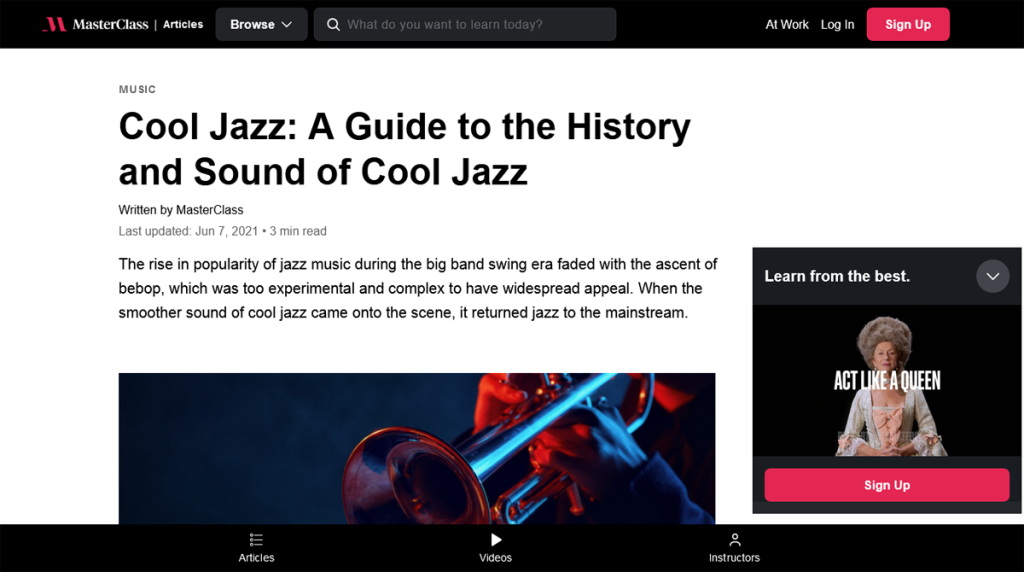
TOFU Channels
For achieving the TOFU objective of brand awareness, SEO and social media are key channels.
Facebook for Brand Visibility
Facebook is a versatile platform for increasing brand visibility. It allows for targeted advertising based on specific interests, making it easier to connect with potential customers.
X (Formerly Twitter) for Niche Engagement
Platforms like X (formerly Twitter) are effective in niches such as SaaS and food trucks. These platforms can be integral to your social media strategy, especially if they align with your target audience’s preferences.
Effective Advertising Channels for TOFU
When considering advertising for TOFU content, Facebook Ads, display ads, and PPC ads are viable options. Facebook Ads are particularly effective for community-building around your brand. They offer the ability to create audiences based on interests, facilitating meaningful connections with potential customers.
Example: Cowboy Hats
For a business specializing in cowboy hats, a Facebook Ads audience could include individuals interested in rodeos, country music, westerns, the Cowboy Channel, and cowboy boots.
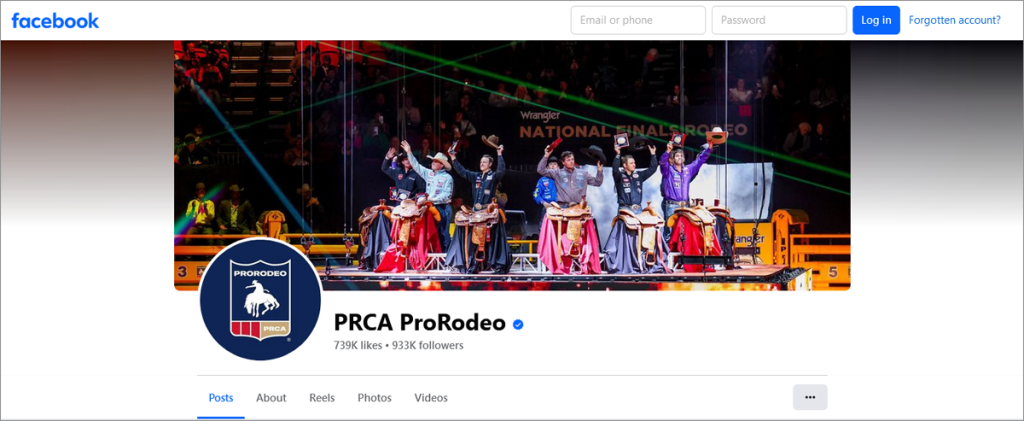
The ultimate aim is to draw these Facebook fans to your website, engaging them with your TOFU content and encouraging them to provide their contact information, thereby initiating their journey through the sales funnel.
Boost Rankings and Revenue With On-Page SEO
After developing your Top of Funnel (TOFU), Middle of Funnel (MOFU), and Bottom of Funnel (BOFU) content, it’s essential to maximize their impact with on-page SEO. This isn’t just a suggestion – it’s a crucial step to significantly improve your SEO results.
By optimizing your pages, you aid Google in understanding your content better, enhancing its ranking for relevant keywords. Grasping the importance of on-page SEO is the final, yet pivotal, step in achieving content marketing success.
All in One SEO: An Automated SEO Assistant
Improve your webpage’s Google rankings by using a WordPress plugin. We suggest All in One SEO (AIOSEO), a user-friendly plugin that simplifies SEO complexities.
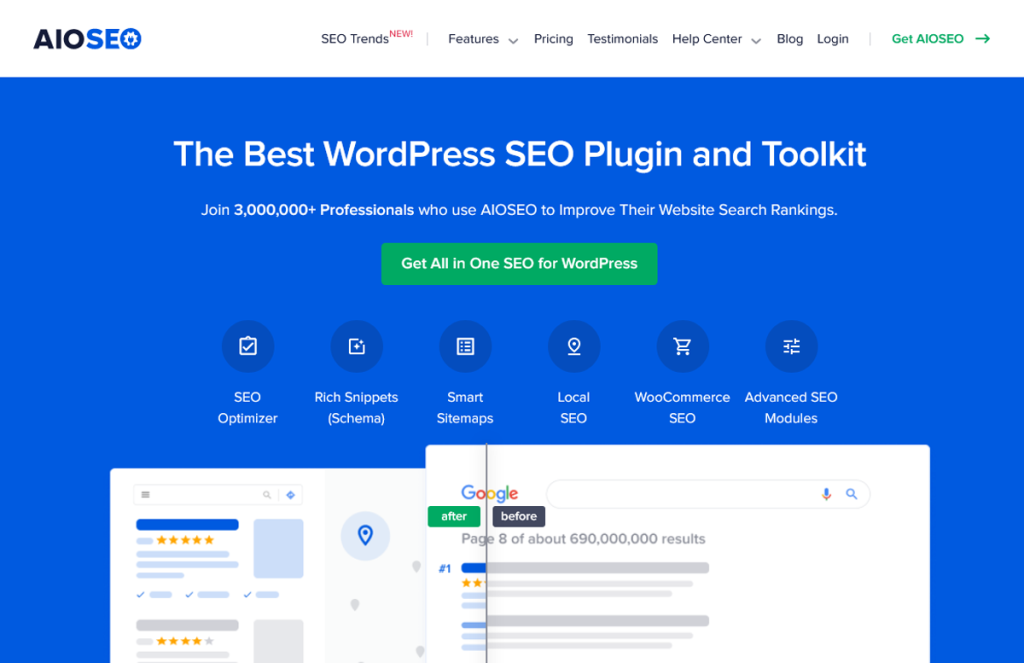
AIOSEO, a well-established plugin with over 3 million users and numerous 5-star reviews on WordPress.org, has a proven track record of helping small businesses.
Three key features contribute to enhancing the ranking of your TOFU-MOFU-BOFU content:
- Automated On-Page SEO checks: AIOSEO analyzes your pages and provides specific action steps for SEO improvement, resulting in an increased SEO score as you implement the recommendations.
- Schema Generator: Easily add schema markup to improve Google’s understanding of your page, leading to better rankings for relevant queries.
- AI-Powered Link Assistant: Streamline internal linking to boost the rankings of your important product or service pages. (Internal linking is a frequently overlooked SEO tactic.)
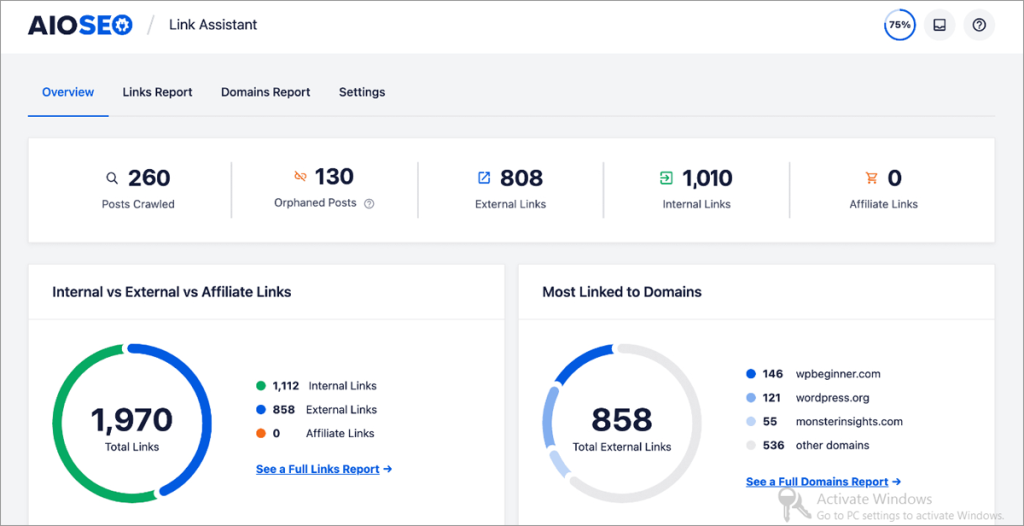
Other AIOSEO features benefiting small businesses include:
- Sitemap Generator: Automatically create maintenance-free sitemaps following Google’s recommendations.
- Local SEO: Give small businesses an advantage in rankings through this straightforward feature.
- Rank Tracking: Monitor your Google rankings seamlessly within WordPress using the SEO Statistics feature, integrated with Google Search Console.
- Google Algorithm Updates: Assess the impact of Google algorithm changes on your content.
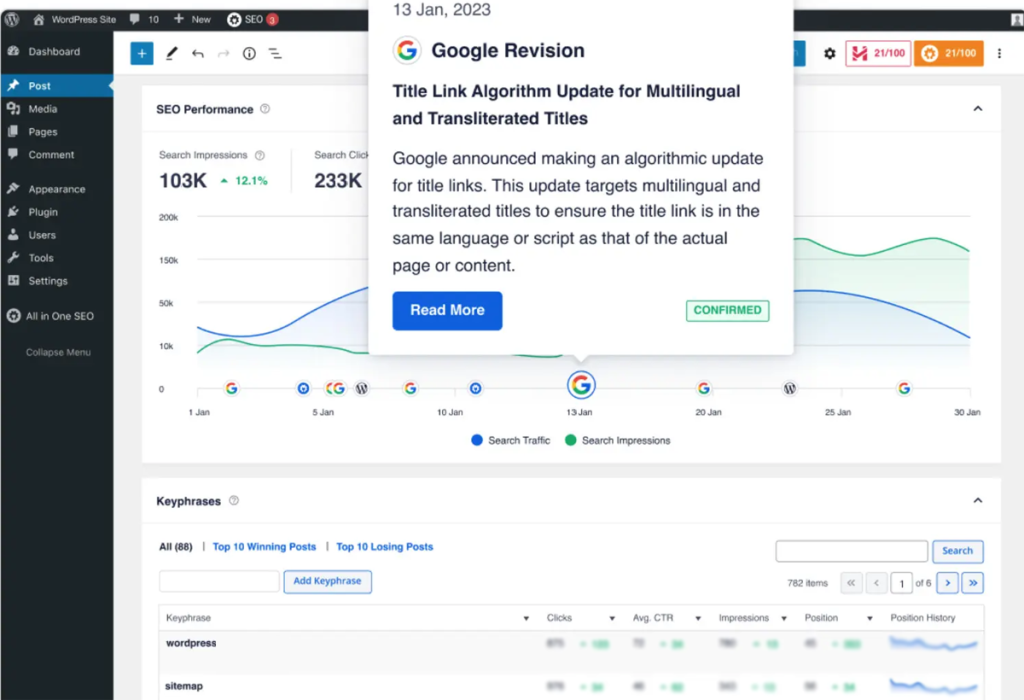
Strategy Review for TOFU, MOFU, and BOFU
We covered a lot in our post, didn’t we? Let us do a quick review.
Take a look at this final version of the table:
| Stage | Marketer Terms | Keywords to Target | Effective Channels | Content Types |
| Awareness | TOFU | Informational | SEO | Content “snacks”“What is” (definitions)General How-Tos |
| Consideration | MOFU | Commercial | Social Media (Facebook Ads), Display Ads | “What Is” (Definitions), Comparisons, How-Tos, Showcase Listicles |
| Conversion | BOFU | Transactional | SEO, YouTube, Email, Display Ads, PPC Ads | Comparisons, Reviews, How-Tos |
Now, to move forward:
- Utilize tools like Semrush or Ahrefs to identify easy-to-rank keywords for TOFU, MOFU, and BOFU. Focus particularly on MOFU and TOFU keywords.
- Develop new content for each keyword. Keep TOFU content light and engaging. For MOFU and BOFU, concentrate on comparisons, how-tos, and engaging lists.
- Ensure all posts are optimized for SEO.
- Use email marketing to promote your content and enhance sales.
- Incorporate testimonials to influence MOFU prospects.
- For BOFU, consider using countdown timers and special offers to encourage decisions.
- Apply SEO techniques across all funnel stages, leverage social media for TOFU, and engage with MOFU audiences through YouTube.
Let’s implement this strategy effectively to drive meaningful results.
FAQs
Are there tools available to streamline TOFU, MOFU, and BOFU SEO strategies?
Absolutely. Tools like Google Analytics and social media analytics are useful for TOFU. Email marketing platforms and CRM systems are ideal for MOFU, while e-commerce analytics tools and conversion tracking are effective for BOFU.
What are some common mistakes to avoid when implementing TOFU, MOFU, and BOFU in SEO?
Avoid overlooking any funnel stage, ensure alignment between content and the respective funnel stage, don’t ignore customer feedback, and always adjust strategies based on performance metrics. Continuous analysis and refinement are key.
What metrics should be monitored to assess the success of TOFU, MOFU, and BOFU strategies in SEO?
For TOFU, focus on website traffic and engagement metrics. For MOFU, monitor lead generation and engagement with detailed content. BOFU success can be measured through conversion rates, sales, and customer retention metrics.
How do TOFU, MOFU, and BOFU correspond to subject clusters?
Creating cluster pages around MOFU and BOFU keywords can enhance accessibility and ranking. Even if the main pillar page is TOFU-oriented, ranking well for subtopic pages can significantly boost the pillar page’s overall ranking.
